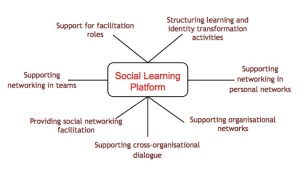Entering the post Facebook age
I have written before about how I expect the future of social networking to eveolve towards less public and more niche social networking applications and channels. In that respect I like a recent article “How to Escape the Public Internet” in New Republic.
In the article Navneet Alang draws attention to the increasing take up of Slack, an app we have been using for communication in some of our projects.
Ostensibly a powerful work chat app where teams can communicate with each other in channels of various topics (in the manner of its public predecessor IRC), Slack has also developed both a rabid userbase and a culture of its own as people turn its groups into communities. Its users aren’t just corporate teams, either. They’re freelancers, groups of friends, and even gaming clans. Though they use it differently, all have turned to the app for the same reason: to take their conversations from public to private.
Slack and other private modes of communication, says Alang, “offers a space hidden from the public internet. What it thus represents is a retreat into the private—or rather, a return to it.” I don’t think this is the only reason for the rise in popularity of private channels (and the return of curated newsletters). Although there have been several attempts to develop alternatives to Facebook they have all tended to look like Facebook clones. Slack is pretty, works on all platforms and is free of the distracting advertising and looks and feels nothing like Facebook. More importantly Slack allows communication with a more limited community of ‘real’ colleagues and ‘friends’. And perhaps most important of all, as in the example Alang provides of a channel for writers and academics, Slack channels seem to be more focused on what you want to discuss, with people with the same interests. Slack for education – there’s a thought!

